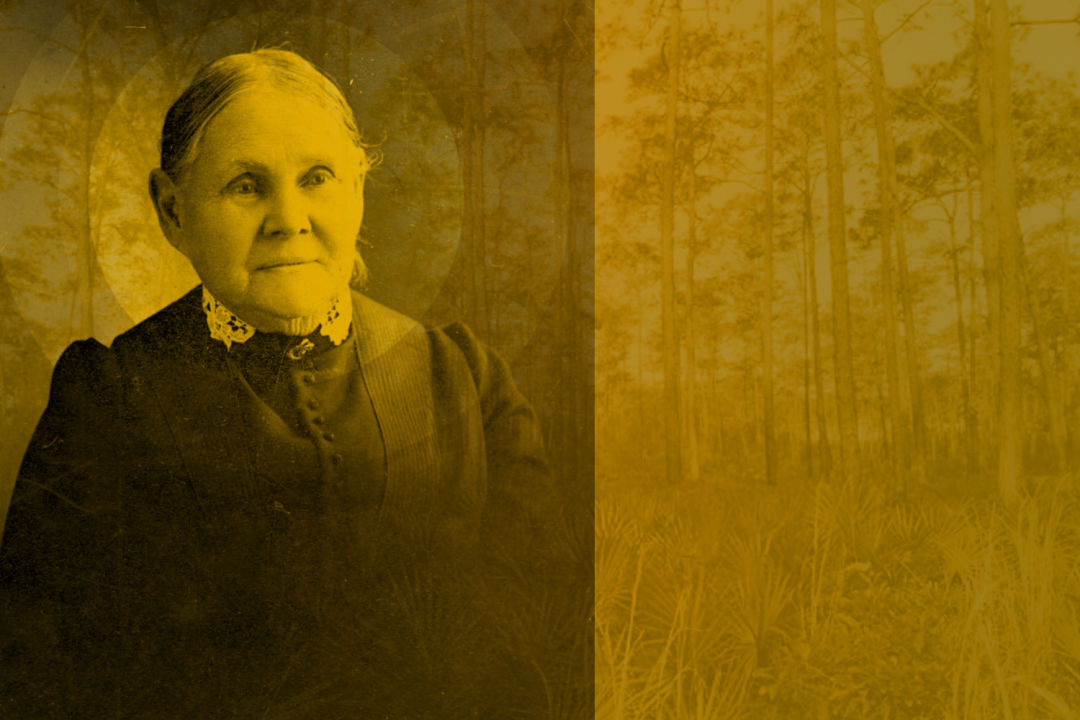Pioneer Mary Jane Wyatt Whitaker Braved the Wild and Helped Found a Dynasty

Pioneer Mary Jane Wyatt Whitaker
True lovers of Sarasota history know at least part of the story of pioneer woman Mary Jane Wyatt Whitaker. The Whitaker family, for whom both Whitaker Bayou and Whitaker Gateway Park are named, was crucial in the early settlement of what is now Sarasota County. (It was then, more than 150 years ago, part of a much larger Manatee County and even earlier, of Hillsborough.) But the tale of this hardy female is one that can inspire us today when it comes to finding resilience and fortitude in troubling times.
Mary Jane was born in Tallahassee in 1831, the daughter of Col. William Wyatt, a delegate to the convention giving Florida its first constitution. While a child in school there, Mary Jane first met her future husband, William Whitaker (more about him later). The Wyatt family left the relatively safe confines of Tallahassee in the early 1840s and moved to the wilds of Manatee, with Mary Jane at first attending a girls’ school in Louisville, Kentucky. When she fell ill, however, she returned to her family, and on her father’s ranch she soon became not only healthy but apparently outstanding: She learned to ride horseback, herd cattle, paddle a dugout canoe and shoot a rifle, becoming the kind of markswoman who, her father boasted, “could shoot the head from a wild turkey at 100 yards.”
All of those skills must have proved highly useful when she married fellow pioneer William, who had settled himself in a log house on the water on Yellow Bluffs (near today’s 12th Street). The hard-working William had established businesses in cattle, citrus and fishing by the time he dared to ask for Mary Jane’s hand; their wedding, in June 1851, was the first recorded in the area. Likewise, the birth of their first child, Nancy, was the first of a white settler. (There were many more children to come, with a total of eight surviving to adulthood.)
Mary Jane lived through the Seminole raids of 1856. (The Seminoles under Chief Billy Bowlegs had formerly been friendly, but began to raid and burn settlers’ homes in the mid-1850s in retaliation for destruction of some of their own property). She also lived through the Civil War, when a blockade of the South by the Union led to privations and hardships even the tough Mary Jane must have struggled with. One story that is frequently told of this time (and it certainly deserves to be true) was that a Union soldier once threatened to burn her house. Mary Jane reportedly handed him matches and dared him to burn the home of a defenseless woman. Needless to say, he relented. (It puts our 21st-century issues of survival in some perspective.)
Mary Jane died in 1908; she and other members of her extended family are buried in the Pioneer Whitaker Cemetery, next to Pioneer Park, the Crocker Church and the Historical Society of Sarasota County on 12th Street.